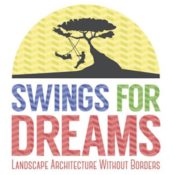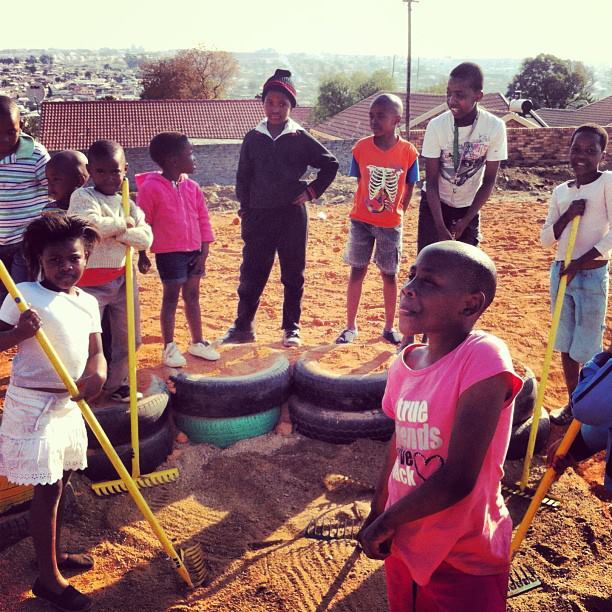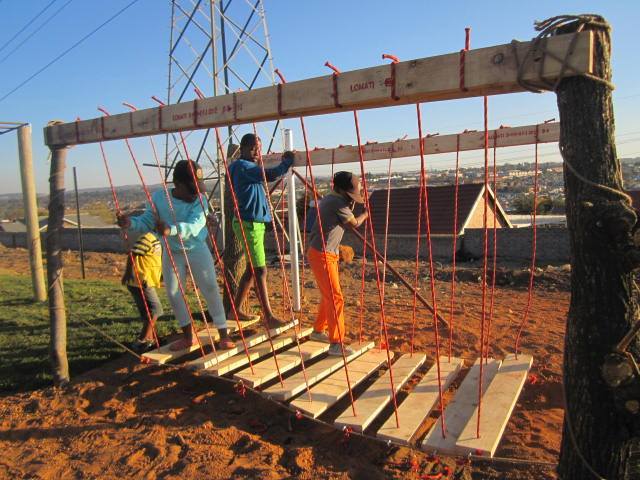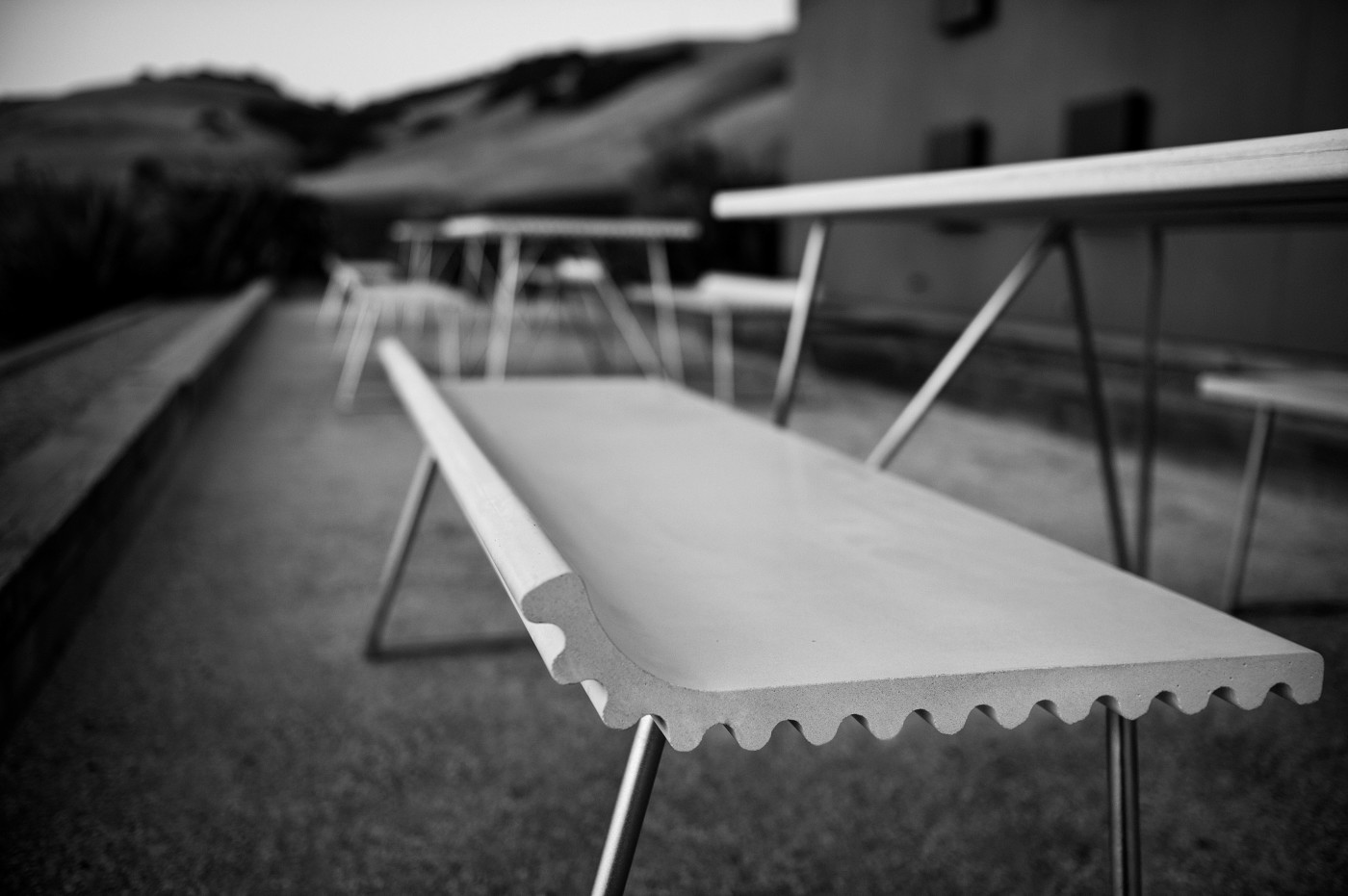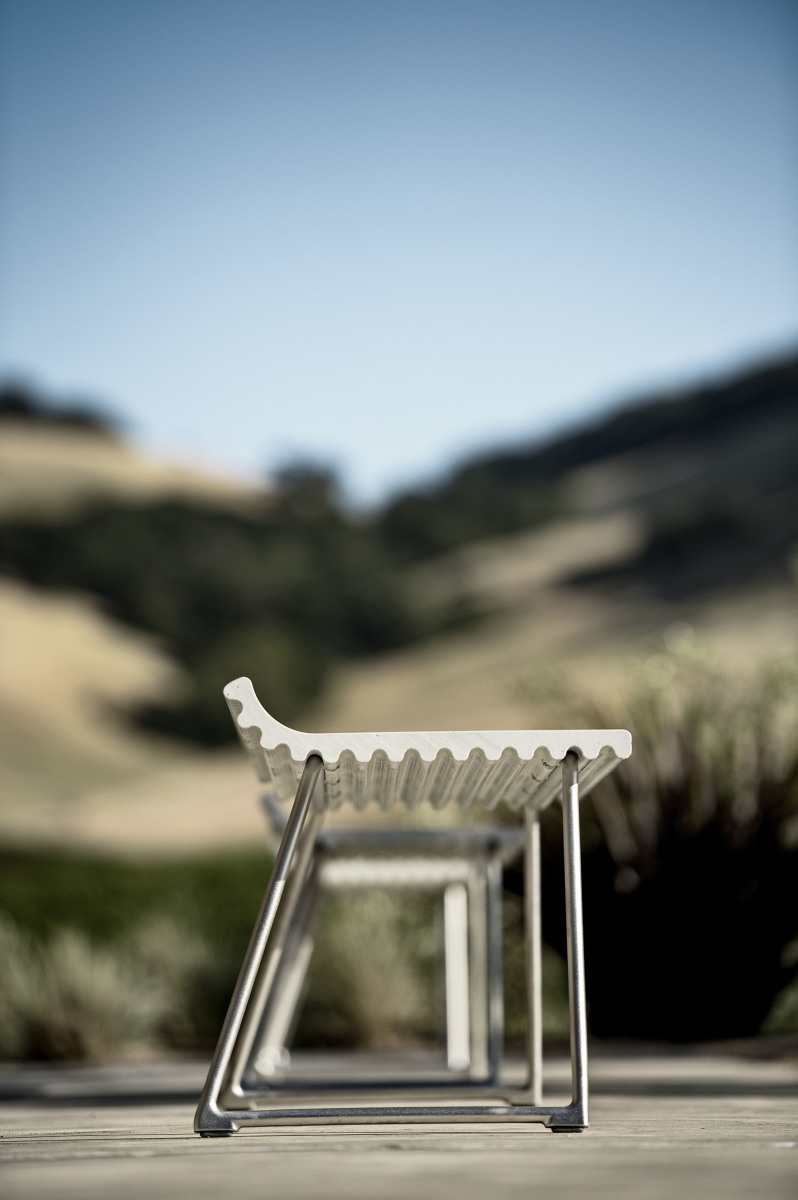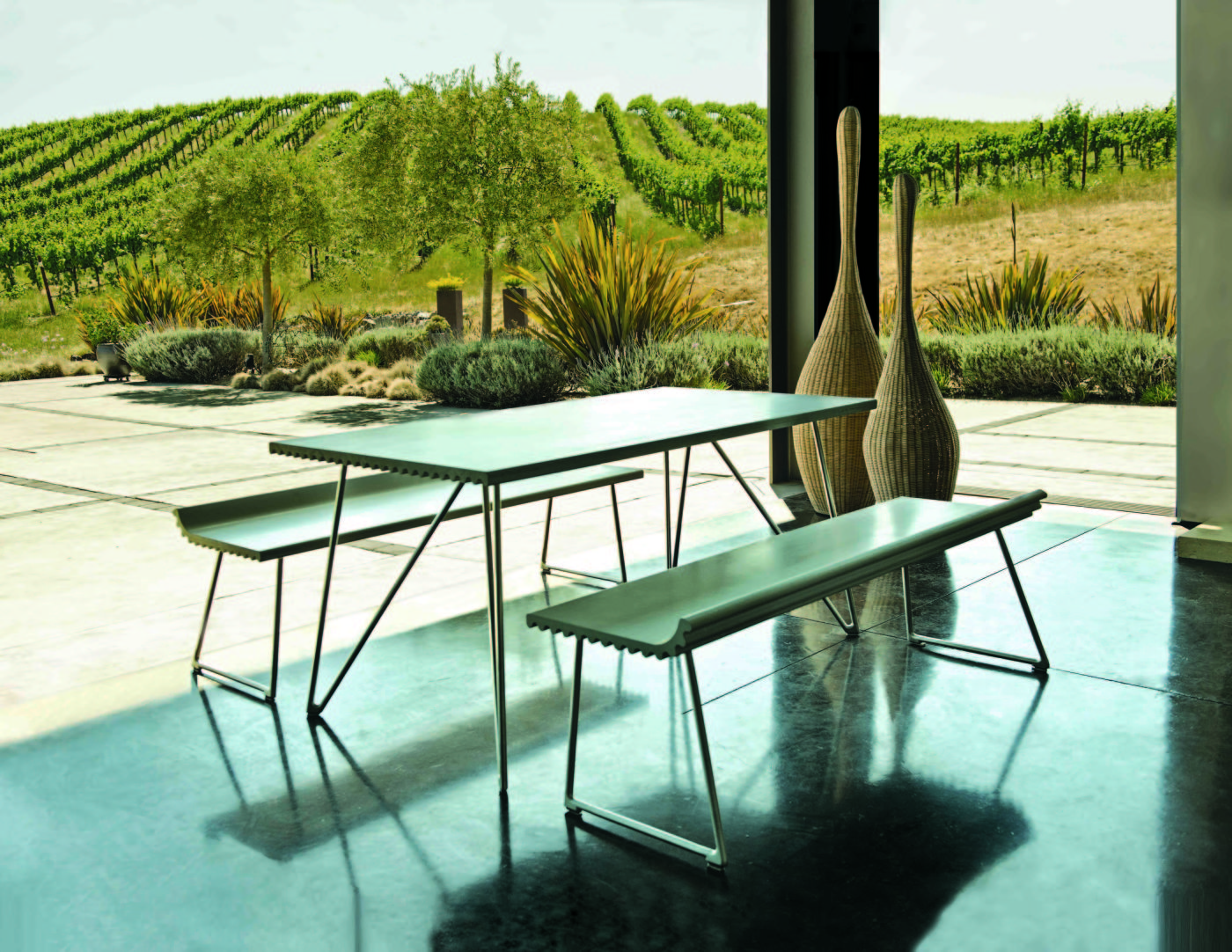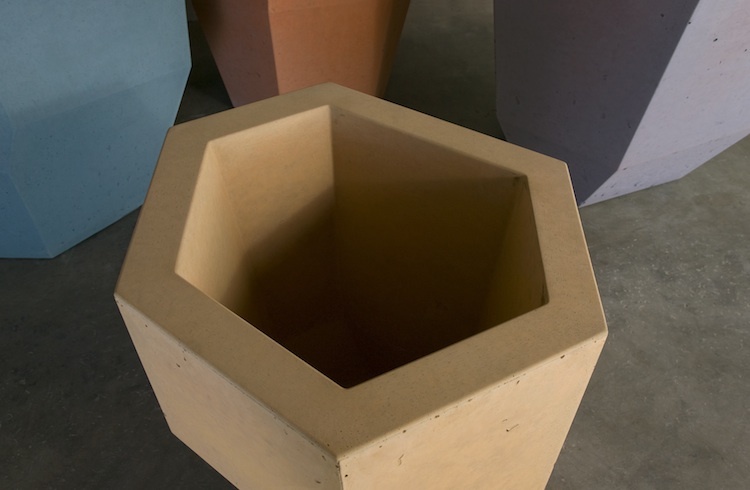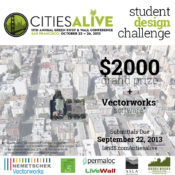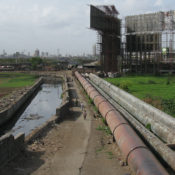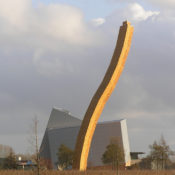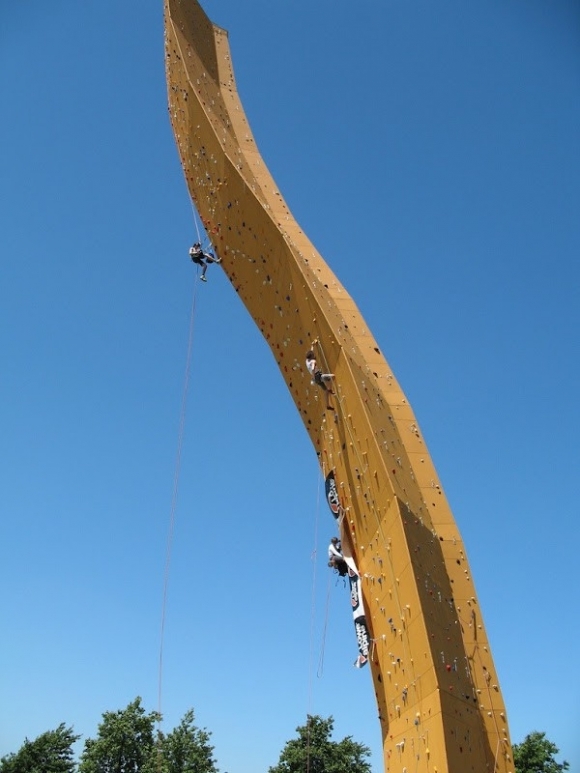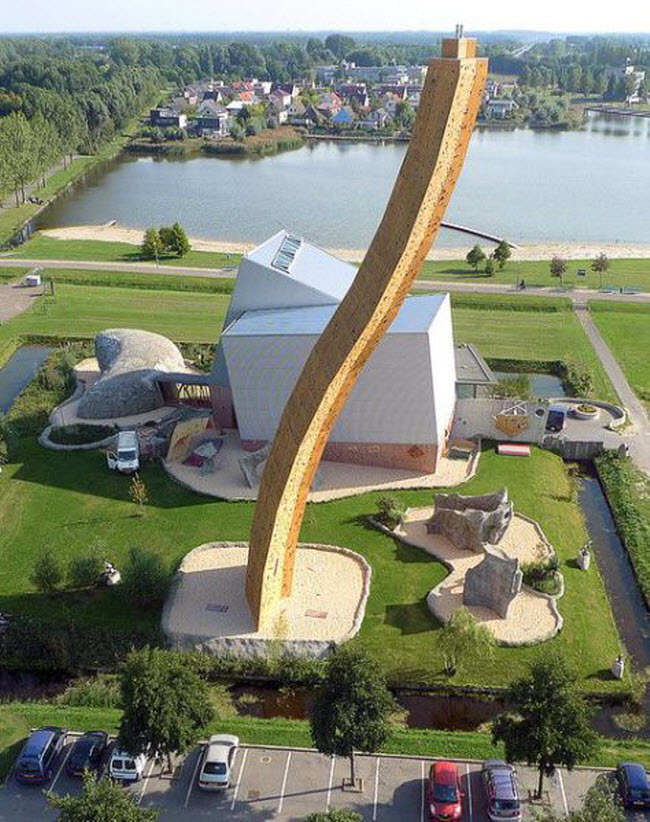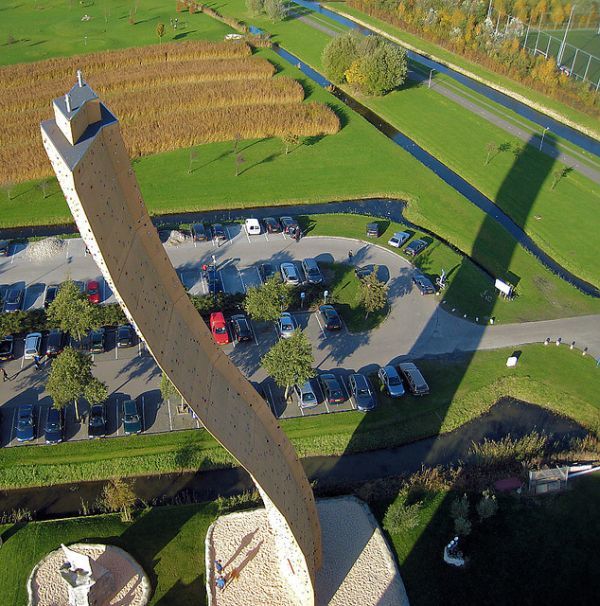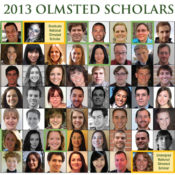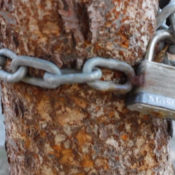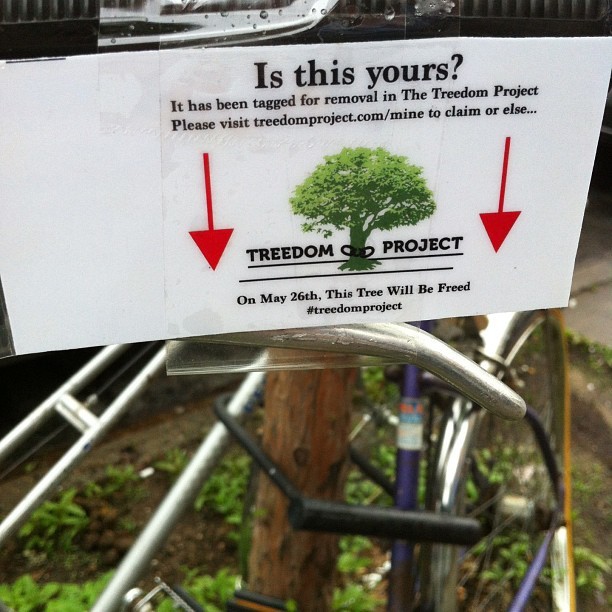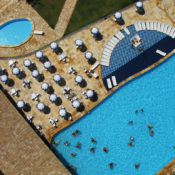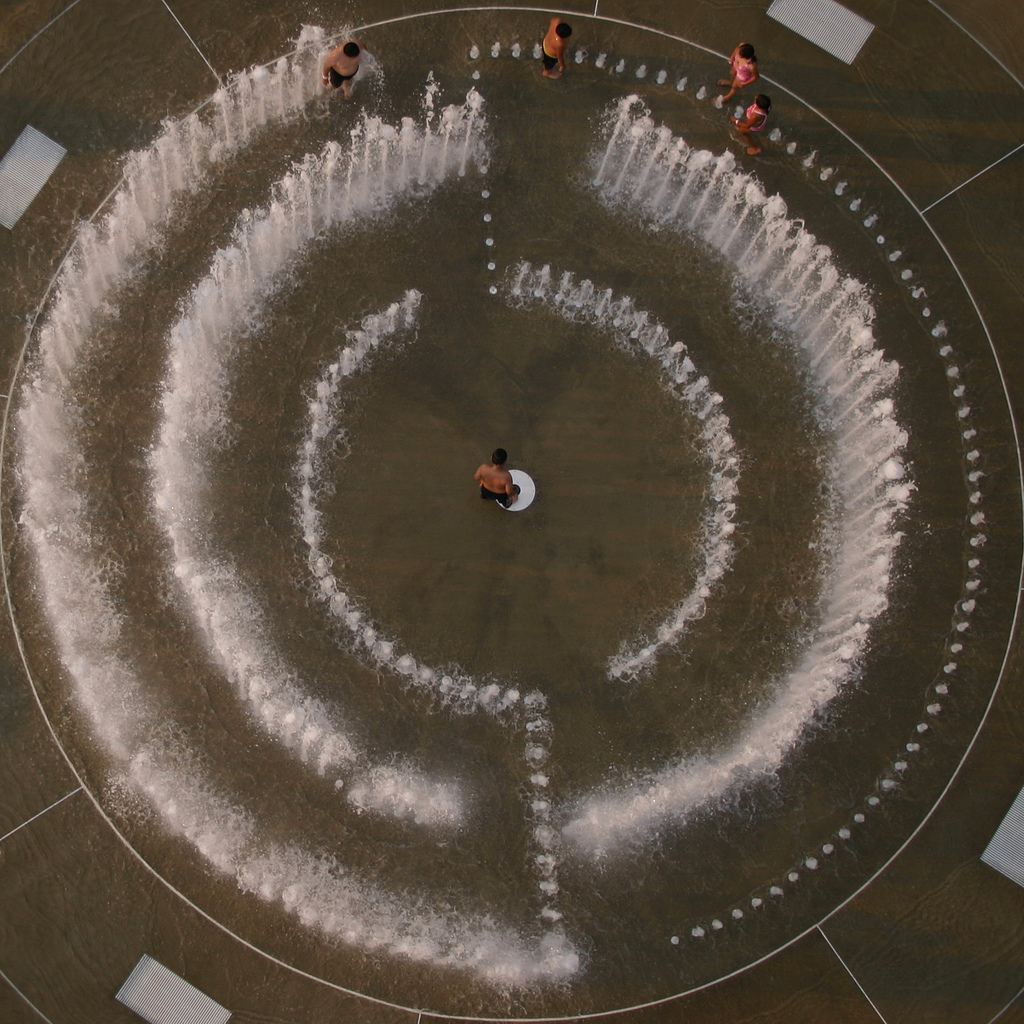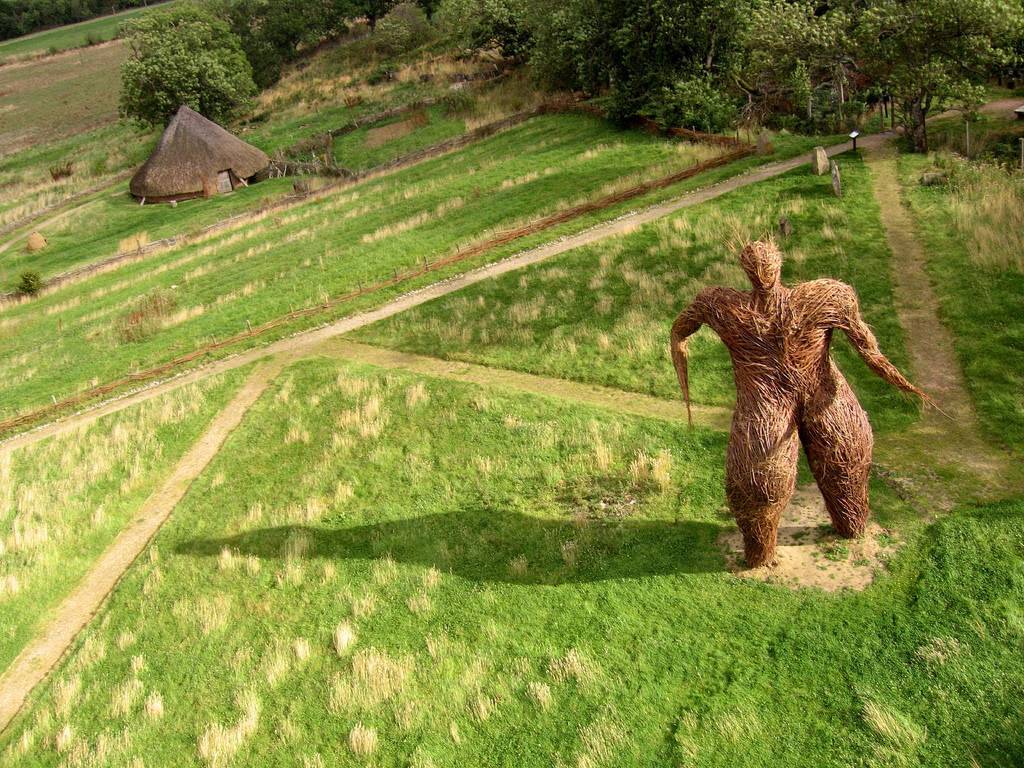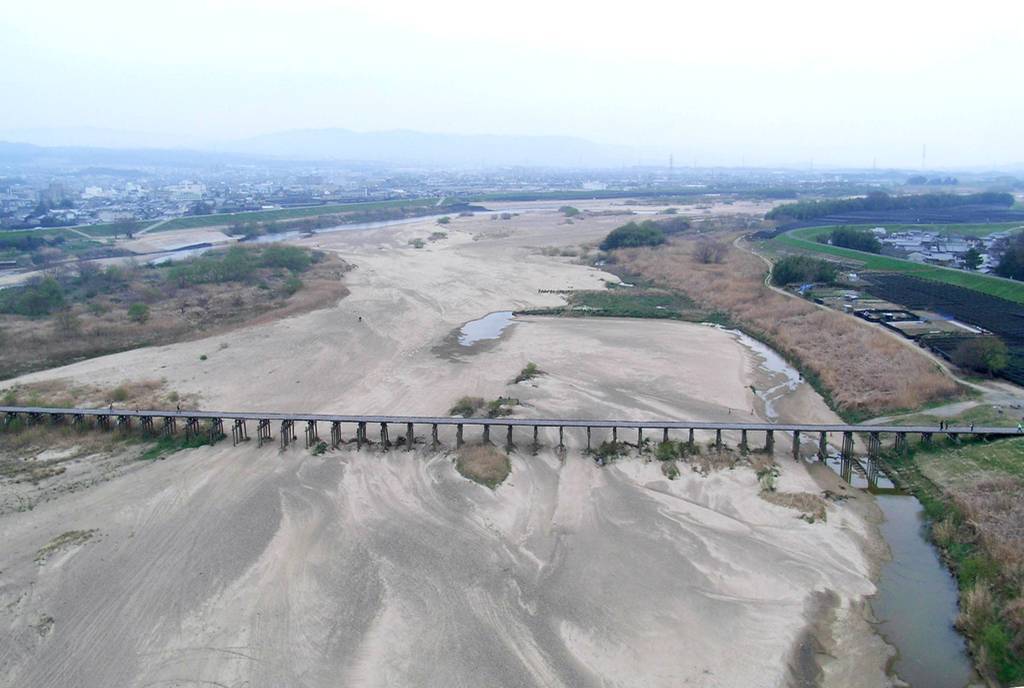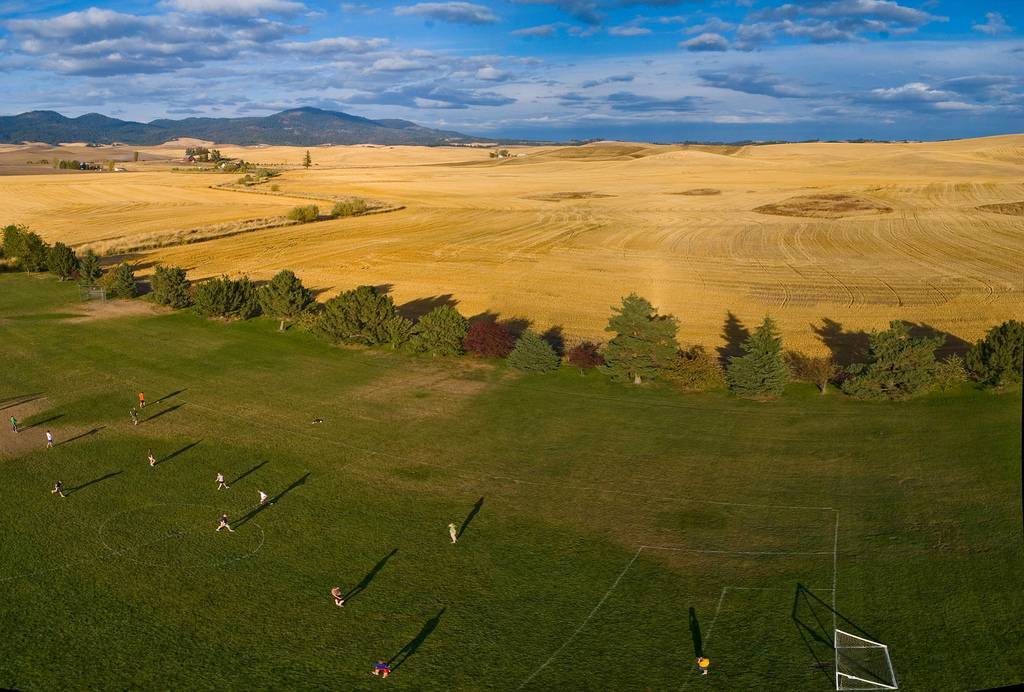Author: Andrew Spiering
Interview with ‘Swings for Dreams – Landscape Architecture Without Borders’ Founder Michael Aguas
I remember the freedom I felt when I first learned to swing and the exhilaration I experienced when my stomach was tickled flying skyward with my friends. We would often launch ourselves, then run to the monkey bars to race through an obstacle course we created for ourselves. We would swing and laugh for hours. It was imaginative, fun, and creative. I never assumed that the availability of safe play equipment was a luxury or even a privilege. Play was simply a part of being a kid – our primary occupation. Remember those days?
Allow me to introduce you to Michael Aguas and his latest project at Swings for Dreams – Landscape Architecture without Borders. Swings for Dreams is a grassroots nonprofit that believes safe play should be accessible for kids worldwide. Unfortunately, many kids living in third world and developing countries lack access to safe and free outdoor play and the leftover spaces where they do play are often in dangerously makeshift areas.
Want to help make a difference? Swings for Dreams just launched an Indiegogo campaign to raise $30,000 to fund the construction costs for a safe outdoor playspace for a primary school located in Nieu-Bethesda, South Africa, and they need our help. Check out the promo video below and my interview with Michael after the jump:
I recently met the Swings for Dreams team for a meal, then sat down with Michael afterward to ask him a few questions about the inspiration behind his project and his hopes for Swings for Dreams. Check it out below…
Hi Michael, thanks for taking some time to answer a few questions for Land8. Let’s start with some basics. Where’ya from… and how did you discover Landscape Architecture?
I was born and raised in Fontana, California, but lived a portion of my earlier years in Redlands, California. I’m not your typical college student…by age I guess. I went back to college after the company I worked for five years shut their doors and laid everyone off. As I grew up, I always wanted my degree, and knew this was a perfect chance to hit the restart button on my life. So, when I went back to college at the age of 25, I started to look into architecture. I knew, deep down, I didn’t want to design buildings because I don’t like the feeling of being enclosed- I love the outdoors. I am also an avid golfer and always wondered who designed golf courses and such, so I went online and discovered landscape architecture. I immediately changed my mind from architecture to landscape architecture and was then accepted into Cal Poly’s BLA program, but not to design golf courses.
What year are you in your studies at Cal Poly and what has your experience been like?
Currently, I’m in my final quarter at California Polytechnic State University in San Luis Obispo. My degree will be a Bachelors in Landscape Architecture. The city of San Luis Obispo and the program at Cal Poly have changed my life 100 percent. The people who I have gotten to know are some of the smartest and most genuine people I have ever met. The program that Cal Poly offers is top shelf; it’s demanding and rewarding at the same time. David Watts is a professor at Cal Poly, and he single-handily changed my life by offering an internship program abroad in South Africa. David offered me the Project Manager position within the internship, and from that moment, my life would never be the same.
Starting a non-profit is a little outside the traditional path for a Landscape Architecture student. Can you tell us about your path to starting Swings for Dreams?
It’s unique right!? Swings for Dreams was started in South Africa last summer while we were designing and constructing a play space for an orphanage called Ratang-Bana. Being Project Manager for the first time, I wasn’t familiar with the specifics, like budgeting and material costs, but this is where my eyes started to open. Our total budget for a half acre playscape was $5,000 USD, the equivalent of 50,000 South African Rands! I was astonished by how far the dollar could go in South Africa. The deal closer was the kids.
Fifty kids were allowed to enter the gates of the orphanage each day to get food and clothing. The kids in Alexandria Township were starving, and there is no other way to say it. My heart broke again and again each day because there were 200 kids waiting to get in. We also needed to eat in order to have enough energy to construct the play space, but sometimes, we simply just gave our food away because we knew that it could be one of the first times the child would eat all week. It got harder and harder to watch as we progressed with the playscape construction.
Seeing kids standing behind the closed gates made me reflect on my life and the possessions that I had back at home. The final straw was when I had to travel into town to go to the local builders supply store. On the way, we stopped to pick up six kids that were walking down the dirt road with huge plastic bags. There were three boys and three girls – two of the boys were 18 and the other 16. The girls were between seven to twelve years old. The kids were well acquainted with the orphanage because their mother recently passed away and the father was nowhere to be found. For the first time, I witnessed a child-only home, which is not at all uncommon in this region of the world.
As we helped the kids take the bags of groceries into the shack, I noticed all that was inside was a mattress and some clothes on the ground. There was no running water and the floor surface was just dirt. On the bed was the fourth sister, who was clearly 6-9 months pregnant. At that time, I was too overwhelmed by emotion, so I just left. As we drove off, I got the full story.
Since the mother’s passing, the kids were starving. With the equivalent of a 6th grade education, the boys became “professional thieves” and the pregnant sister was selling her body in order to provide food for the rest of her family. And, that wasn’t the worst part– it was confirmed she had AIDS. These seven siblings were in a state of desperation unlike anything I have ever seen in my life. That was it. My heart broke into so many pieces. I like to consider myself a “manly-man,” but this experience shattered me. I wasn’t going to stand for it.
After the construction of the playscape was complete, we truly got to experience what impact we had on the community. Seeing grown adults on their hands and knees stroking the blades of grass we planted and their ear-to-ear smiles triggered the “Ah-hah!” moment. That night, my best friend and Construction Team Leader, Nicholas Tuttle, and I decided that this was what we wanted to do for the rest of our lives: help others who don’t have the resources to help themselves. Swings for Dreams officially started three days after we finished construction, while we were still in Africa.
What was the most memorable moment of your first project at the Ratang Bana Orphanage?
Watching the kids play! Seeing the elders of the orphanage in tears as a result of such happy kids. Seeing the kids playing, I understood that this was a temporary physical relief from the beyond harsh reality of their everyday lives. The last day at the orphanage left many lasting memories.
How has this experience shaped your view of the profession of Landscape Architecture?
To be honest, I love Landscape Architecture, period. I love AutoCAD (I know I sound crazy). I love plants. I love designing. I love the profession from top to bottom and hope that Swings for Dreams will help take Landscape Architecture into an entirely new scope of social responsibility.
How do you hope Swings for Dreams will influence local communities?
I would like our local communities in America to understand that play is essential to the mental and physical development of children and that play isn’t a right that is shared around the world – whether it being here in America or 8,000 miles away in a rural town in South Africa. To help out with our community efforts in America, we have started Swings for Dreams Juniors, an educational high school club that was started by Sophie Thompson, a freshman at Dos Pueblos High School in Goleta, California. Swings for Dreams Juniors is our “Kids helping Kids” campaign to help combat the disparity of play around the world. Our Juniors learn about Landscape Architecture and fundraising, while developing positive life skills. They will also be also be communicating with kids around the world. Our Juniors club is expected to expand to five new high schools at the beginning of Fall 2014.
You recently launched an Indiegogo campaign. What are your goals with your second project?
Yes! We are about to launch our Indiegogo Crowd Funding Campaign on May 1st, 2014!!!! Our funding goal is $30,000 USD. Our next project is located in the very rural town of Nieu-Bethesda, Eastern Cape, South Africa. Our site is Lettie de Klerk Primary School, which has 240 young minds from the ages of 7-18 attending. We basically came across this site by making a 24 hour pit stop to rest in a neighboring town called Graaff-Reinet. Nicholas and I were merely walking around town, stopped in a clothing store, and met a man named Dean Vaaltyn. Dean’s wife happened to be the principle of Lettie de Klerk, and we told him what we did in Alexandria. He asked us to consider doing work in central South Africa. He advised us that “everyone forgets about us in the middle.” He went on to make a very good point: “Just because we live in the middle of nowhere doesn’t mean we should be forgotten about.” Nick and I shook his hand and advised him we would not forget about him.
As soon as we landed in America, the plan to return to Lettie de Klerk began. We have sent three PhD scientists with ranging specialties to conduct our site analysis, along with a four-page questionnaire to learn more about the needs of the school and the community. Lettie de Klerk is on a barren piece of land that has basically no vegetation (kids cannot eat lunch outside because they have no shade from the extreme heat), no clean water, and no place for kids to be kids.
This is where Swings for Dreams comes in to help! Swing for Dreams’ goals are to improve not only the lives of the children of Lettie de Klerk, but the lives of the community. Our design is loaded with fun custom play elements for all age levels, sports fields, lots of plant material, rain water harvesting systems, and water purification systems to just name a few. In addition, we’re bringing in professionals who can help with improving sustenance farming. We want to teach the children and community about sustainable farming techniques like “Dry Farming” so they can move into a new realm of healthy living rather than just surviving. My team is also looking to bring safety and education back to school. We want Lettie de Klerk to be a hub of hope for children, when there might not seem like there is any, in desperate times. And, we want to keep a promise to Dean. Nick and I are men of our words.
Along with the Indiegogo campaign, are there other ways Land8 members can get involved? In other words, how can we best support the cause?
Wow! Just meeting the founder of Land8 was amazing – I love real people! Land8 and its members can help the growth of Swings for Dreams in three ways. Members can donate monetarily through our Indiegogo campaign online so we can reach and exceed our goal of $30,000.00 USD.
Land8 members can volunteer on a future project or collaborate with us by filling out the volunteer page on our website.
Lastly, if everyone could share and help spread the message of Swings for Dreams– that’s really all I can ask for. Members can share our website, swingsfordreams.org. They can also share any of our social media platforms – our goal is to simply spread the word.
Again, thanks for all you’re doing Land8! Swings for Dreams doesn’t believe in fate– good causes bring good people together and it was an honor to have met Andrew and all of Land8.
Our pleasure! Good luck on the Swings for Dreams’ next project in Nieu-Bethesda, South Africa and beyond…
I would like conclude with a quote from Carl Jung – “The creation of something new is not accomplished by the intellect but by the play instinct.”[Tweet this] Let us help fund the mission of Swings for Dreams, so we can help improve the lives of our young ones and create something new – together. Donate here
Images via Michael Aguas
Olithas by Landscape Forms
Olithas by Landscape Forms is part of their new Terrace Life initiative that marks the company’s entry into lifestyle furniture for more intimate, social, high-design outdoor spaces. “Design professionals know Landscape Forms as a manufacturer of site furniture for streetscapes, parks and campuses,” explains company president Richard Heriford. “Now we are going to places we haven’t been before with furniture by award-winning architects and landscape architects designed specifically for terraces, rooftop gardens and other private and protected spaces. With Terrace Life we’re creating new modern classics.” More after the jump…
Olithas is a table and bench collection by architect/industrial designer Efrain Velez that draws on his grounding in classical and international style and his interest in innovative material technology. This 2013 Red Dot Award winner features thin-profile MeldStone™ surfaces of stunning form and elegance.
The name, Olithas, combines the Greek word “lithos” meaning stone, and the Spanish word “olitas” meaning little waves. These little waves made of stone are certain to make a big splash. Check out the video below to learn more about the design:
For more product details, please visit Landscape Forms
What is your first impression? Let us know what you think in the comments below…
Quartz Series Containers by Kornegay Design
Phoenix-based product designer, Larry Kornegay, found inspiration for these containers from colored quartz crystals that he inherited from his father. Introduced in 2010 to the Kornegay Design’s product line of finely crafted pre-cast concrete site furnishings, the Quartz Series containers are quirky and fun yet bold and sophisticated.
Dynamic intersecting planes comprise the six faceted sides of each of the four containers in the series which are highlighted by the interplay of light and shadow – producing an alternating display of crisp and soft edges. To complement the nature of the Quartz Series, Kornegay custom-mixed integral concrete pigments in crystal-inspired hues.
These containers are heavy, with weights of up to 2200 pounds, a characteristic Larry Kornegay doesn’t apologize for. He says, “We make these with the intent of providing long-term value and beauty, they need to withstand extreme weather environments and heavy pedestrian traffic.”
Learn more: Kornegay Design
All images courtesy of Kornegay Design.
Announcing the Launch of CitiesAlive Student Design Challenge
We are excited to announce the CitiesAlive Student Design Challenge! University students and recent graduates are invited to imagine and create ‘resilient communities’ by using living architecture – green roofs and walls – to redesign a community center in the Tenderloin district of San Francisco, California.
The CitiesAlive Student Design Challenge, hosted here on Land8, is an academic element of the green roof and wall industry’s annual CitiesAlive Green Roof and Wall Conference, which takes place in San Francisco from October 23 – 26 2013 and is hosted by Green Roofs for Healthy Cities in partnership with the City of San Francisco Planning Department and the San Francisco Public Utilities Commission.
Students will submit designs to transform the Tenderloin location – an ethnically diverse but highly urbanized landscape with limited open and recreational space – into a facility that would provide expanded space for the district’s 4,000 children to connect with nature through rooftop and wall green space and gardening, and the chance to learn about sustainable use of energy and water. The contest entry deadline is September 22, 2013.
First place prizing is $2000 cash. The top 8 designs will receive complimentary student passes to the CitiesAlive Green Roof and Wall Conference in October and – for those who used Vectorworks® within their project – a professional license of Vectorworks Designer 2014 with Renderworks®. Winning designs will be displayed at the CitiesAlive trade show on October 23rd and 24th, at a green roof and wall themed event at the Academy of Sciences on October 24th, and featured here on Land8.
CitiesAlive Student Design Challenge judges include esteemed landscape architects and planning professionals from the City of San Francisco’s Departments of Planning and Public Works, plus qualified professionals from the Land8 and Green Roofs for Healthy Cities community. The contest is sponsored by Nemetschek Vectorworks, Inc., greenscreen©, Permaloc, and LiveRoof.
Check out further details and download the competition brief here: Land8.com/CitiesAlive
Tech Beat: Black Spectacles brings Software Training Online for Architecture & Design
Want to get up to speed on the latest software technology? Then, check out Black Spectacles, an awesome website for learning architecture and design software. Whether you need to get ahead in school or a new job or simply just want to improve your skills, you can learn software on your own schedule, on any device, anywhere you can get an internet connection. The courses are lead by architects and designers practicing at the best firms in the world on topics ranging from AutoCAD to InDesign. Each course is structured into short, concise clips which makes it easy to follow along. There are plenty of free segments that anyone can access like this Introduction to 3DS MAX.
Members get full, unlimited access to all of their courses, free office hours with their authors & discounts on live webinars. Plus, Land8 members get 15% off the initial subscription by using this code: 15ASAF
It is definitely worth checking out… visit blackspectacles.com and start polishing your skills today.
Landscape Urbanism Launches Scenario 4: “Rethinking Infrastructure”
Need a good read this week? Here is an in-depth study for you! Our friends over at Landscape Urbanism recently launched the latest issue of the newly-named Scenario Journal – Scenario 4: Rethinking Infrastructure. This issue responds to the emergence of infrastructure as a central concept within the larger conversation about urbanism and a key force driving the transformation of urban landscapes, exploring the pressing question of how the infrastructure of the next century will be imagined and built.
“Scenario brings together work from practitioners, academics and students of landscape, planning, architecture, art, engineering, and environmental science,” which gives each issue a unique and fresh perspective. Crafted by Editors-in-Chief Stephanie Carlisle and Nicholas Pevzner, the Scenario 4 co-editors write:
“Infrastructure underlies and shapes urban growth, yet for the most part exists outside the realm of design discussions, tucked below ground or hiding in plain sight. Long fascinated with complex, dynamic powerful systems, designers are finally turning their attention to the potential of infrastructure as fertile conceptual territory. “With the pressing issues of climate change, financial malaise, unemployment and failures of governance, it is clear that the old approach to infrastructure —heroic but expensive, brittle, and difficult to maintain —will not be possible for too much longer. How do we ensure that the urgent conversation about the design and conception of infrastructure is a multidisciplinary project? How do we move beyond the buzzwords of green infrastructure, soft systems, and eco-engineering, in order to create a landscape infrastructure that is robust enough for the challenging times ahead?”
Recipient of the 2012 ASLA Honor Award in Communications, the Landscape Urbanism website was created by Sarah Kathleen Peck as a platform for interrogation, dialogue, and critical inquiries of the potential and futures of landscape urbanism ideas.
Check out the latest issue here: http://landscapeurbanism.com/journal/issue-4/
Photo Credit: Filled mangrove near Bandra Station, Mumbai. Photo by Stephanie Carlisle
Excalibur: The World’s Tallest Climbing Wall
The Excalibur, situated within the Bjoeks Climb Center among the flatlands of Groningen, The Netherlands, is the world’s tallest climbing wall. Towering 121 feet above grade, it stands like a monument over the surrounding landscape. If the sheer height were not enough, a sleek curve 36 feet from the base provides an artificial overhang for advanced climbers and creates a dramatic element to the skyline.
Want to give it a shot? Your effort promises to pay off with a great view when you make it to the top, as well as some serious bragging rights.
All the aerial photos above were taken using a kite! Learn more about KAP in my last post, Kite Aerial Photography: Site Photos from a New Perspective
[HT Inthralld. + DesignTaxi]
Additional photo credit: izismile
How to Make a Portfolio: 5 Tips for Telling your Story
The video above was produced by Newschool of Architecture + Design (NSA+D)to help educate their potential applicants on how to make a portfolio for graduate submissions. Not only is it a fun and useful guide, it is an example of great marketing. (It certainly made me want to create something beautiful and apply.) You will want the same, positive reaction when someone reviews your portfolio. Whether you are applying for graduate school or a new job, the following 5 Tips will help you create a portfolio that communicates who you are, what your passionate about, all while showcasing your skills and helping you stand out:
1. Tell your story.
Ask yourself – is it easier to remember facts or a story? Sure, it is important to select projects that will showcase your talent and creativity. However, if you want to be remembered, then you will need to tell your story through the projects you include. Select projects that tell the story of who you are and why you are the designer you are today. “Focus on what made you realize why art & design (or Landscape Architecture) are your way of life…”
2. Less is more.
Be selective. NSA+D recommends that you only include 5-10 projects or designs in your portfolio. Make sure they relate to your story and tell what it is that you are most passionate about. If you do not have a large body of work, then think back to anything that you have created. They note that, “anything that springs from an idea can be considered a design.” Which of your designs are you most excited about? Include them.
3. Let your designs speak for you.
Once you have selected your designs, include anything that describes the core idea and how you arrived at the solution. Include things such as: inspiration images or quotes, hand notes and drawings, concept sketches, and even videos. Include whatever you think will help “tell” reviewers about your creative process – what you have done and what got you there.
Again, less is more. “A few carefully selected images work far better than pages and pages of low quality pictures”
4. Your portfolio is a design.
Think about your story and how you want to package it. Choose a format that fits your style, exhibits your work best, and reinforces your story. If you need some inspiration, Jennifer de Graaf has some great resources posted here, here, and here. You can also find some great examples on dribbble and behance.
5. Have fun.
Above all, relax and have some fun. “This is the best way that your portfolio will tell your story.” When you do, your personality will come out and your story will be remembered. You know the saying… “Love what you do. Do what you love.” So… what are you waiting for?
Hope this helps! Feel free to leave your lessons learned and tips below…
LAF Announces Winners of the 2013 Olmsted Scholar Awards
Since 2008, the Landscape Architecture Foundation (LAF) has honored student leadership through their Olmsted Scholars Program, the premier national award and recognition program for landscape architecture students. The 2013 class, nominated by their faculty for being exceptional student leaders, join a growing community of 250 past and present Olmsted Scholars.
Needless to say, it’s a BIG deal to get this award. Being nominated for the program is an incredible honor as well and a prime opportunity for Universities across the U.S. to showcase their best talent. It is definitely worth learning more about the nomination and selection process. With the growth of the program over the past six years, this year marks the first that LAF has offered separate awards for graduate and undergraduates.
Two independent juries of leaders in the landscape architecture profession selected the winners and finalists from the group of 39 graduate and 28 undergraduate nominees. After hours of evaluating each nominee’s application package, along with two rounds of deliberation, the juries agreed upon two winners and 6 finalists of the 2013 Olmsted Scholar Award:
 Leann Andrews, a graduate student at the University of Washington, was selected as the 2013 National Olmsted Scholar and recipient of the $25,000 award. In June, Leann will receive a Master of Landscape Architecture with a Certificate in Global Health. She plans use the award to return to Lima, Peru to implement her certificate capstone project: a community gardening and ecological restoration initiative in a distressed informal ‘slum’ community.
Leann Andrews, a graduate student at the University of Washington, was selected as the 2013 National Olmsted Scholar and recipient of the $25,000 award. In June, Leann will receive a Master of Landscape Architecture with a Certificate in Global Health. She plans use the award to return to Lima, Peru to implement her certificate capstone project: a community gardening and ecological restoration initiative in a distressed informal ‘slum’ community.
 McKenzie Wilhelm, a BSLA candidate at the Ohio State University, is the other 2013 National Olmsted Scholar and the first to receive the new $15,000 undergraduate award. She plans to use the award to travel to Bristol Bay and the proposed Pebble Mine in Alaska to research and develop speculative designs for alternative mining practices and modular intervention to enhance and protect salmon habitat.
McKenzie Wilhelm, a BSLA candidate at the Ohio State University, is the other 2013 National Olmsted Scholar and the first to receive the new $15,000 undergraduate award. She plans to use the award to travel to Bristol Bay and the proposed Pebble Mine in Alaska to research and develop speculative designs for alternative mining practices and modular intervention to enhance and protect salmon habitat.
Also honored are six National Olmsted Scholar Finalists, who each receive $1,000. The graduate finalists are:
• Jose Alvarez, Florida International University
• Tina Chee, University of Southern California
• Graham Prentice, University of Pennsylvania
The undergraduate finalists are:
• Zachary Barker, State University of New York
• Pamela Blackmore, Utah State University
• Eliza Rodrigs, University of Massachusetts, Amherst
The 2013 Olmsted Scholars will be honored at LAF’s 28th Annual Benefit, Rising Tide, on Friday, November 15 in Boston, held in conjunction with the ASLA Annual Meeting & EXPO.
See profiles of the entire group of 2013 Olmsted Scholars at: www.lafoundation.org/olmsted
Treedom Project: 30-days to Liberate Brooklyn’s Street Trees
We have all seen the girdling effects that can be caused by abandoned tree stakes and ties, metal clamps, string lights, and bike locks. (If you haven’t yet, look around.) They are not only an eye-sore, they cause girdling and can weaken the integrity of the tree. That is where Rob Birdsong’s mission began. He noticed an old chain on the trunk of a Japanese Zelkova on his block in Brooklyn and decided to do something about it. He borrowed a bolt cutter from his local hardware store and, with the help of a friend, he cut it off. The Treedom Project was born.
Birdsong and his small team of six arborists and carpenters set out on a quest to liberate street trees from their chains, literally, with the hope of raising awareness of the importance of protecting the urban forest. Local community members are encouraged to report a tree, then the Treedom team places a “tag” (shown above) on the susceptible trees.
“The project has come together very organically. We went from clipping one chain and making a short video about it, to tapping the local community for their eyes and ears, to putting all of the stuff we collect on a mural-esque educational display to raise awareness about our urban forests” – Rob Birdsong
On May 26th, Rob Birdsong and his Treedom Fighters along with the horde of volunteers will hit the streets of Brooklyn carrying bolt and wire cutters to free over 50 trees from various chains, cables, straps, and metal collars… all for the sake of protecting our most valuable urban resource – street trees.
Watch the video below for the full story.
If you would like to get involved, contact Rob at the Treedom Project
All photos courtesy of Rob Birdsong/Treedom Project
Also see Laughing Squid, The Atlantic Cities, MillionTreesNYC
Congratulations to the Winners of the 2013 Iron Designs’ Challenge!
Congratulations to the Winners of the 2013 Iron Designs’ Challenge! At the beginning of April, Iron Age Designs challenged you to design a winning site furnishing family consisting of a bollard, bench, and a bin. From among the 77 design submissions, a group of the Top 10 Finalists were selected. It is now with great excitement that we announce the winners of the 2013 Iron Age Designs’ Challenge. And the winners are…
GRAND PRIZE
Congratulations to our grand prize winner, John Newman, for the Xanthorrrhoea australis – inspired design. He will be taking home a $1500 check and 3% commission on all sales for 10 years. Yup, his design will go into production! We will follow the process through production and look forward to seeing it in a plaza, park, or campus near you.
STUDENT AWARD
Congratulations to Katarzyna Malarek for winning the Student Award. She will be receiving a $500 scholarship courtesy of Iron Age Designs.
PEOPLE’S CHOICE
Marla Cirino and Anwar Morales take home the People’s Choice award for their design, Formato.
Here are the runner ups from among the Top 10 Finalists:
Sen Masahiro Inoue
Orbit Graham Taylor
Waves & Stripes Marta Warminska
THANKS!
Again, we want give a BIG thank you to all the designers that submitted their designs. We had a great turn out and plan to make this an annual competition, so stay tuned for next year. Who knows, the next time you go to sit down, it might be on your bench!
Kite Aerial Photography: Site Photos from a New Perspective
Ever go on a site visit and wish you could get an aerial shot of the property? You may have climbed a ladder, or a tree, or perhaps even found a neighboring roof in hopes of getting a better vantage point. (Ya, I know you’re out there!) Then, when that did not work out as planned, you turn to google earth only to get a grainy screenshot. Well, perhaps next time you should bring a kite. Check out these amazing Kite Aerial Photography (KAP) images that were all taken safely from ground level, using a kite.
Splashpad – Germantown, Maryland
Butser Farm, Hampshire, UK
Champ de blé à Fontenailles, France
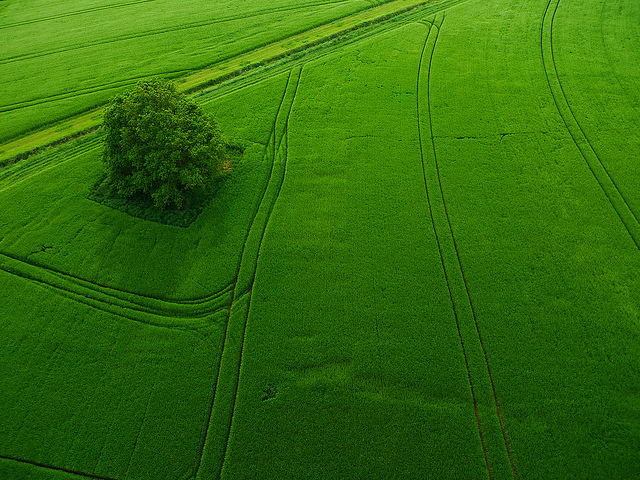
Iguazu Falls, Paraguay, Brazil
Balloon Festival, Lincoln City, Oregon
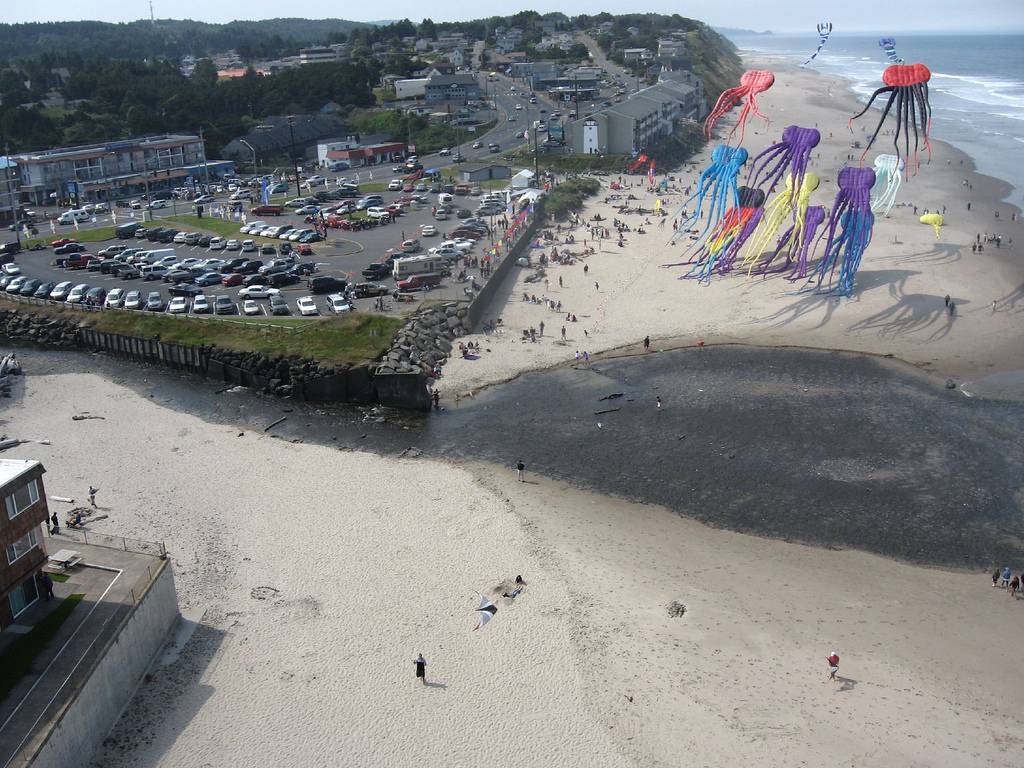
Monument to African Renaissance, Senegal, Dakar

Wood National Cemetery, Milwaukee, Wisconsin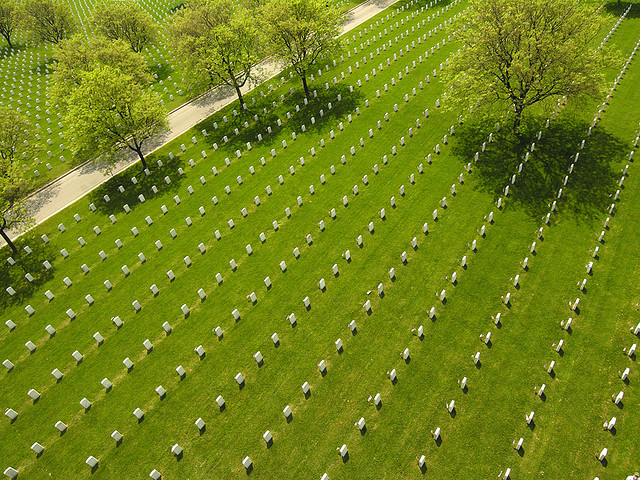
Le Havre, Seine Maritime, France
You can head over to the KAP Shop to get geared up. Now, all you need is a little wind…
[Via Kuriositas and Digital Photography School]
All images link to owner. Top image: Beberibe, CE, Brazil by Ricardo Ferreira
Update: Check out the KAP images of Excalibur: The World’s Tallest Climbing Wall



